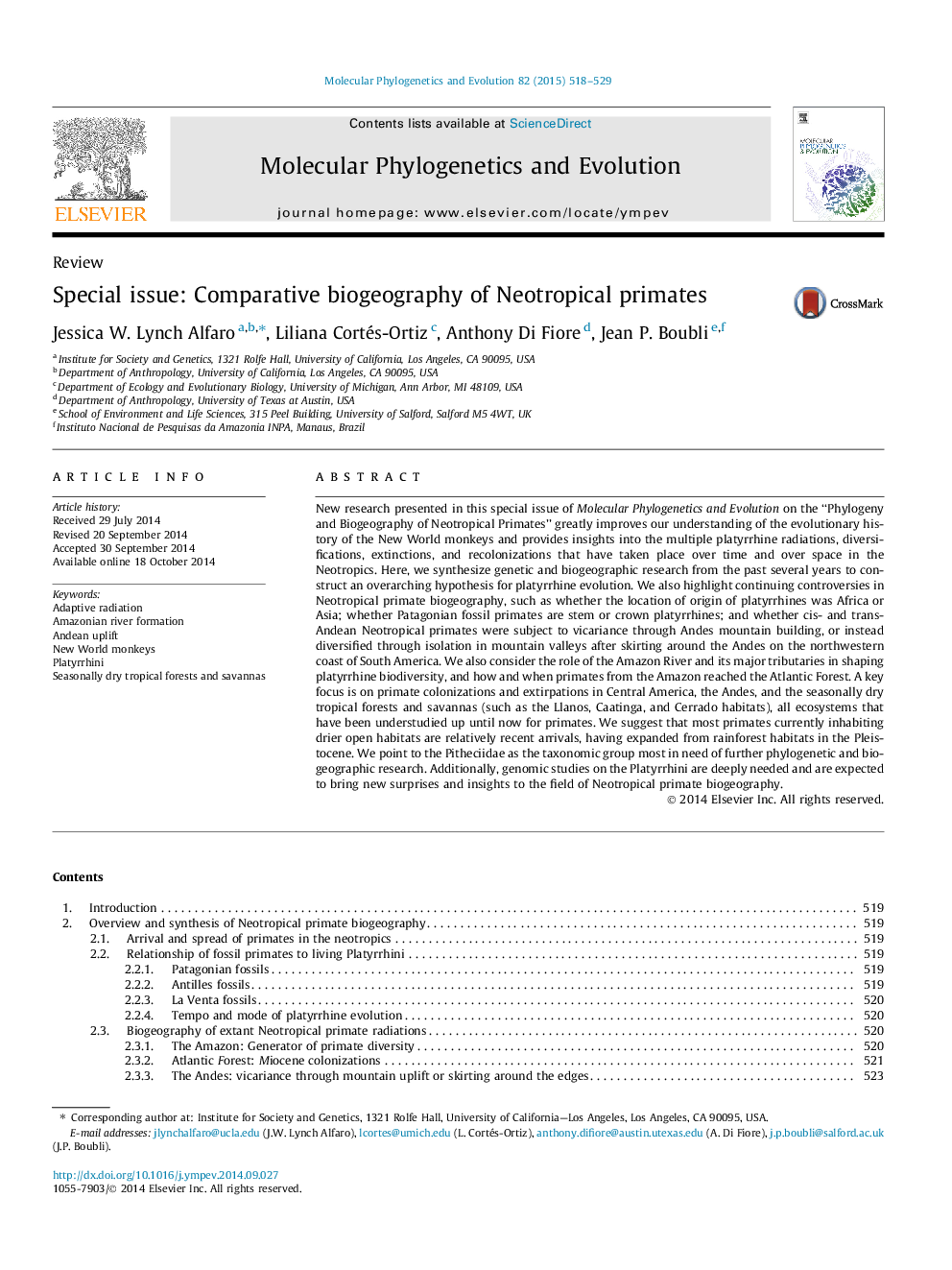| کد مقاله | کد نشریه | سال انتشار | مقاله انگلیسی | نسخه تمام متن |
|---|---|---|---|---|
| 5918933 | 1164253 | 2015 | 12 صفحه PDF | دانلود رایگان |
- We review major recent advances in Neotropical primate biogeography.
- Evidence points to an Amazonian origin and long-term tropical habitation for Platyrrhini.
- Intermittent Miocene connections led to Atlantic Forest colonizations from the Amazon.
- Extant primate occupation of drier open ecoregions is due to recent expansions from rainforest.
New research presented in this special issue of Molecular Phylogenetics and Evolution on the “Phylogeny and Biogeography of Neotropical Primates” greatly improves our understanding of the evolutionary history of the New World monkeys and provides insights into the multiple platyrrhine radiations, diversifications, extinctions, and recolonizations that have taken place over time and over space in the Neotropics. Here, we synthesize genetic and biogeographic research from the past several years to construct an overarching hypothesis for platyrrhine evolution. We also highlight continuing controversies in Neotropical primate biogeography, such as whether the location of origin of platyrrhines was Africa or Asia; whether Patagonian fossil primates are stem or crown platyrrhines; and whether cis- and trans-Andean Neotropical primates were subject to vicariance through Andes mountain building, or instead diversified through isolation in mountain valleys after skirting around the Andes on the northwestern coast of South America. We also consider the role of the Amazon River and its major tributaries in shaping platyrrhine biodiversity, and how and when primates from the Amazon reached the Atlantic Forest. A key focus is on primate colonizations and extirpations in Central America, the Andes, and the seasonally dry tropical forests and savannas (such as the Llanos, Caatinga, and Cerrado habitats), all ecosystems that have been understudied up until now for primates. We suggest that most primates currently inhabiting drier open habitats are relatively recent arrivals, having expanded from rainforest habitats in the Pleistocene. We point to the Pitheciidae as the taxonomic group most in need of further phylogenetic and biogeographic research. Additionally, genomic studies on the Platyrrhini are deeply needed and are expected to bring new surprises and insights to the field of Neotropical primate biogeography.
Journal: Molecular Phylogenetics and Evolution - Volume 82, Part B, January 2015, Pages 518-529
